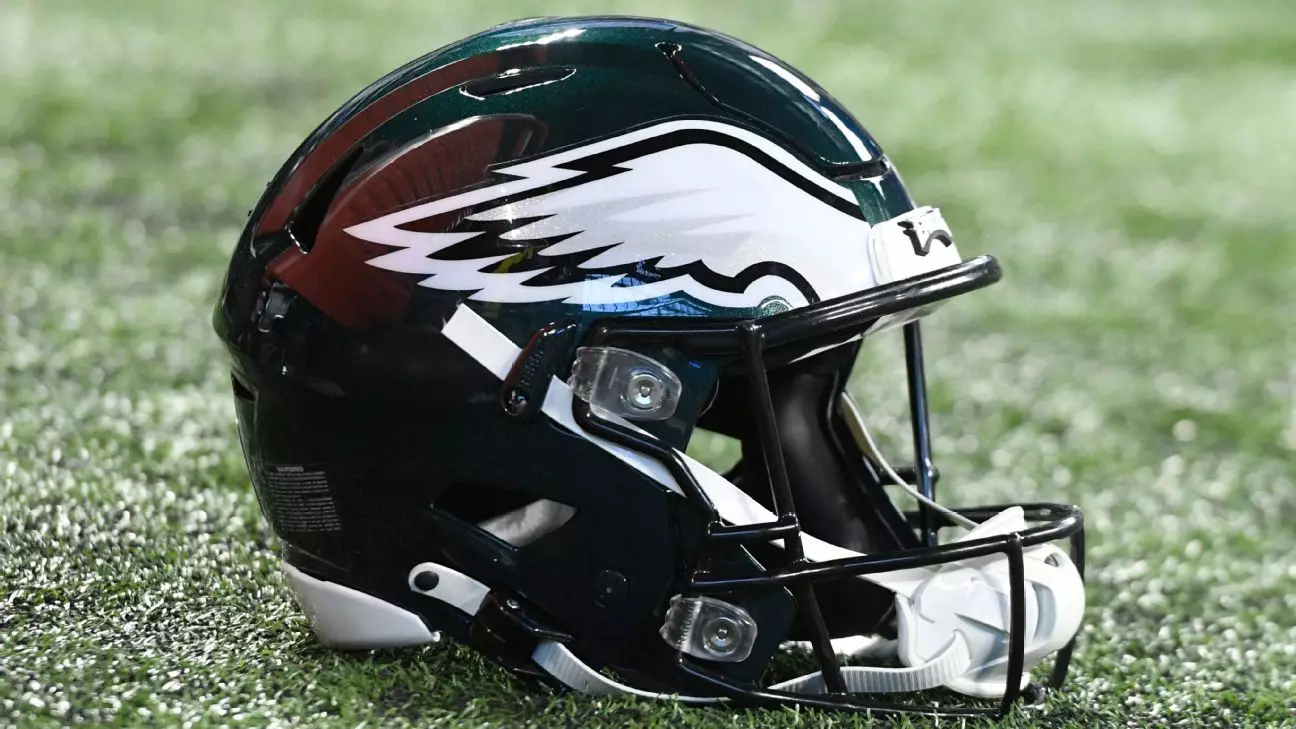In the high-stakes environment of the NFL, player trades are often more than mere transactions—they are strategic maneuvers aimed at refining team dynamics and addressing roster needs. The recent trade between the Las Vegas Raiders and Philadelphia Eagles exemplifies this approach, highlighting how each franchise seeks to bolster critical areas—defensive front lines—by exchanging players based on evolving tactical visions. Such decisions reflect a broader understanding that in professional football, team strength hinges on the subtle balance of talent, depth, and strategic flexibility.
The Raiders’ decision to send cornerback Jakorian Bennett to the Eagles in exchange for defensive tackle Thomas Booker IV underscores a deliberate shift in their defensive architecture. Bennett, a talented but somewhat overlooked young corner, had shown flashes of promise despite battling injuries and a fluctuating role. Trading him signifies the Raiders’ prioritization of defensive line versatility and depth—areas that are often the linchpins of a robust defense. Meanwhile, acquiring Booker, who offers depth for the interior line, aligns with their immediate goal of filling gaps left by the release of Christian Wilkins, who is still recovering from injury.
The Eagles, on the other hand, are exploring their options at cornerback, especially after the departure of veteran Darius Slay. The competition between Adoree’ Jackson and Kelee Ringo, coupled with ongoing evaluations of other young talents, reveals an uncertain but potentially fertile ground for emerging playmakers. Acquiring Bennett introduces a fresh dynamic, offering competitive pressure and depth that could solidify their secondary even further. Both teams leverage these moves not only to address current needs but also to create internal competition—driving players to elevate their performance and fostering a culture of relentless pursuit of excellence.
Sentiments and Strategic Implications for Each Franchise
For Las Vegas, trading Bennett reflects a strategic gamble—accepting the risk that their young corner might not develop as hoped in exchange for bolstering their defensive interior. Bennett’s injury history and recent position on the depth chart may have prompted the Raiders to consider fresh options at the position. Their focus seems centered on creating a flexible, multi-layered defense that can adapt to the league’s offensive trends. The inclusion of Booker, with his experience and rotational capability, provides the Raiders with multiple tactical options, especially during the grueling regular season where depth is often tested.
The Eagles’ move signals a different mindset. With the departure of a key veteran in Slay, they are actively seeking to fill the void with talent capable of stepping up, whether immediately or in the future. Their decision to sign Jackson and give rookies like Kelee Ringo opportunities indicates a blueprint rooted in building a competitive yet adaptable secondary. Incorporating Bennett into this mix offers insurance, ensuring that the Eagles can maintain their defensive integrity amid the ongoing battles for starting roles. The fact that both teams see value in this trade showcases a broader NFL landscape where roster fluidity is a strategic necessity rather than a sign of instability.
Looking Beyond the Surface: What This Means for the Future
These moves exemplify a growing trend in the league—teams prioritizing multi-dimensionality and internal competition to unlock hidden potentials in their roster. Neither the Raiders nor the Eagles is simply concerned with the immediate; rather, they are orchestrating long-term strategic plans rooted in flexibility and resilience. For the Raiders, the emphasis on beefing up their interior line aims to create a defensive foundation capable of withstanding dynamic offensive schemes. For the Eagles, fostering a competitive environment among their secondary prospects is about cultivating future starters who can step into big roles under pressure.
Furthermore, these transactions highlight the importance of mental toughness and perseverance—a reality often overlooked amid game film and stats. Bennett’s declaration of always feeling like an underdog reflects a mindset necessary for rising through NFL ranks, especially in a landscape rife with competition. The Eagles’ ongoing battles at cornerback and their willingness to evaluate multiple options underscore that success often requires patience and adaptability rather than static plans.
In essence, football teams today are less about assembling star-studded rosters and more about constructing strategic ecosystems. Each move on the transaction wire—be it a trade or a signing—is a piece of a larger puzzle aimed at creating a resilient, versatile defense capable of weathering the unpredictable nature of NFL campaigns. Both the Raiders and Eagles are exemplifying this approach by recognizing that short-term gains often depend on long-term strategic depth.


Leave a Reply